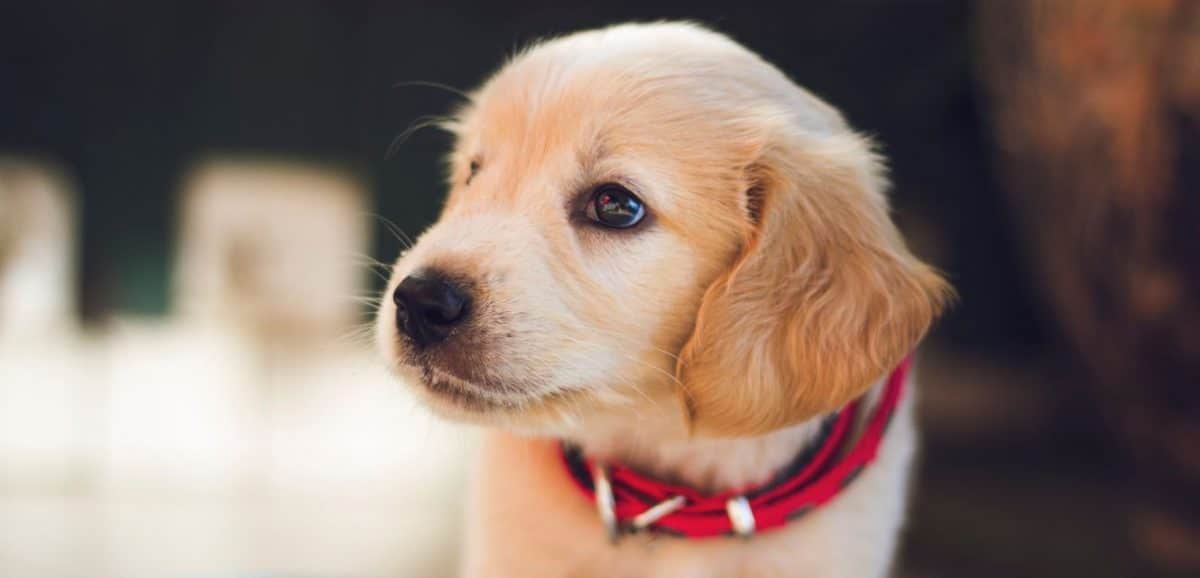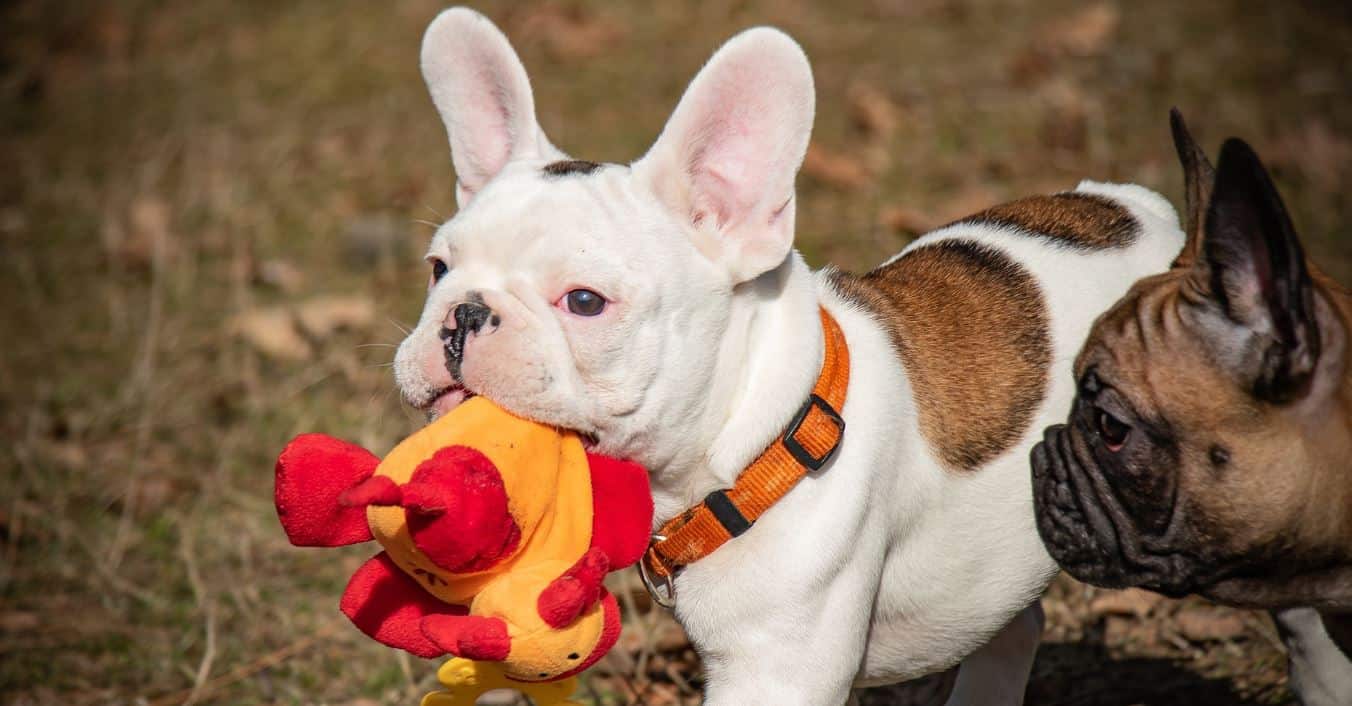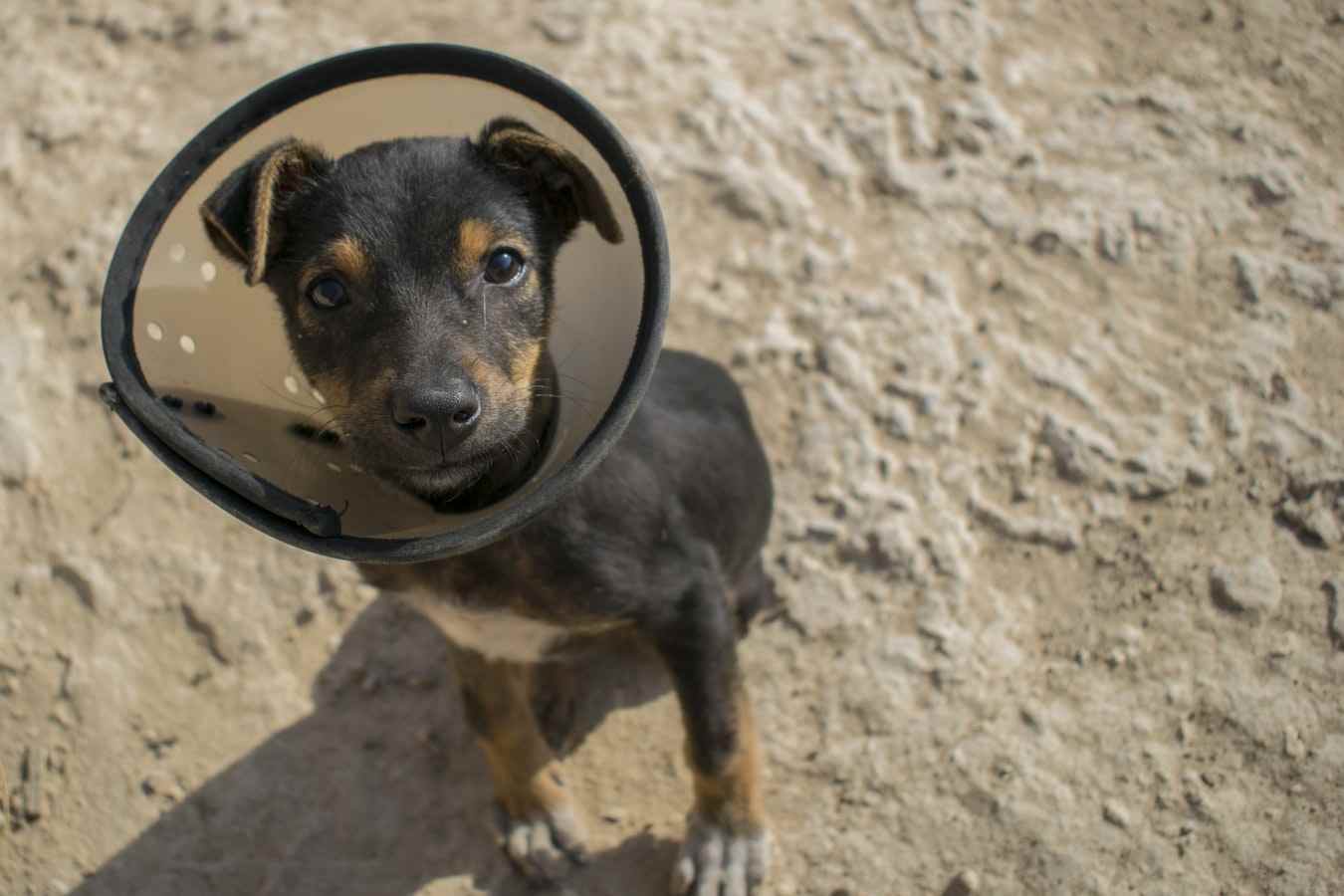The cost of owning a puppy is a large financial– and emotional– commitment. Whether you buy, adopt, or take in a stray, initial costs are just the beginning of puppy ownership.
It’s important to consider how much you should budget towards caring for your puppy. Granted, it’s nowhere near the cost of college tuition. However, it’s not pocket change either. So, we created this guide to examine the different costs associated with owning a puppy. We’ll show you what to expect as far as expenses go, and how to potentially reduce the cost of owning a puppy.
Breed Considerations
Puppies require quite a bit of attention, and from a financial standpoint, this typically translates to more expenses. By taking the time to pick the right dog breed for you, you can save money in the long-run.
For example, if you work all day, live in an apartment, and hate the outdoors, then a big or active dog breed is probably not for you. A puppy that doesn’t get its energy out effectively can soon become destructive. So, to prevent this unnecessary expense of owning a puppy, take your time picking out a breed.
Here are a few factors that make certain breeds more expensive than others:
- Size: A bigger dog means more food to buy.
- Energy level: A more active dog may require many toys for attention.
- Hair type: Long-haired breeds need regular grooming to look good.
- Physical characteristics like short snouts: These types of breeds are at a higher risk for breathing issues.
- Blood-line: Puppies from special blood-lines are very expensive.
Let’s not forget the price of actually purchasing a puppy too. Many people don’t realize some breeds can cost thousands of dollars! Besides the initial purchase price, the above factors will require the investment of either your time, money or both. So, if you’re on a budget, check out this list of the most affordable dog breeds. And for those who are just curious, check out our list of the top 10 most expensive dog breeds.
Where you get your Puppy Matters
While researching the different dog breeds, you’ll likely run into the decision of picking between purebred or mixed breed puppy. Depending on this choice, the cost of purchasing or adopting a puppy can vary. So, let’s break down the differences when purchasing a puppy from a breeder, pet store, or adopting from a shelter.
Purchasing a puppy from a pet store
Pet stores are typically the first place a new, soon-to-be pet owner will go. Interestingly enough, though, many animal lovers warn against them! Usually, smaller pet stores purchase their animals from high-volume breeders to lower their expenses as a business. Unfortunately, these types of pet stores are more interested in making a dollar than the well-being of the animals. As a result, animals purchased from pet stores are at higher risk of health issues.
Luckily, this isn’t true for all small pet stores. Nowadays, we see more pet stores investing in the comfort of the pets they carry. Because of this, they’re able to jack up the prices in the hundreds. Along with higher costs, there are also very few benefits. Unlike shelters, pet stores don’t spay and neuter animals, and most don’t treat illnesses. This, along with other reasons, are why people typically refrain from purchasing puppies from pet stores.
Adopting a puppy from a shelter
Many pet owners prefer to adopt from a shelter. Most of the animals there have been abandoned or abused by previous owners. Many believe adopting is the most humane option since you’re giving the dogs a second chance. Additionally, the cost of adopting a puppy can range anywhere from $25 to a couple hundred depending on breed.
For some, the cost of adopting a puppy might seem high. However, it covers a number of expenses and can save you money in the long run. Shelters take care of immediate medical needs, vaccinations, and can even spay or neuter the animal.
Purchasing a puppy from a breeder
If you’re interested in a specific type of dog, then a private breeder is the way to go. Reputable breeders treat their animals with care, run their operations ethically, and produce quality puppies. They’re also the easiest way to find the type of purebred dog you want.
Seasoned breeders produce great puppies because undesirable traits are bred out and the desired features are kept in the bloodlines. However, the downside is that going through a breeder can be expensive. Many dog breeds start at $2,000 and go well into the quadruple figures.
The Initial investment for a Puppy
The initial cost of owning a puppy varies a bit from the long-term expenses you may incur. That’s why we’ll cover both, so you gain a complete understanding of the cost of owning a puppy.
To start, regardless of where you get your new puppy, the first thing you should do is make an appointment with a good veterinarian. Puppies are at risk for a variety of conditions and may need treatments such as:
- Dental work: By the age of three, about three-quarters of dogs will have some form of dental disease.
- Vaccines: Vaccines are important since they prevent deadly viruses like parvo.
- Spay/neuter: Dogs that are not neutered have a slightly higher tendency to be more aggressive.
- Preventive medications: Preventative maintenance can save you money in the long-run.
- Flea control: Fleas are common and it’s important to treat your puppy immediately before the fleas have a chance to spread to other pets.
- Heartworm control: Heartworm disease causes lasting damage to the heart, lungs, and arteries. This affects the dog’s health and quality of life long after the parasites are gone.
An initial vet visit for your puppy will likely cost you anywhere from $50-300.
The price range varies because it’s dependent on your puppy’s health and region where you live. It’s recommended that puppies should visit the vet once a month until about four months old. So, keep in mind that each visit can cost an average of $150 depending on the needs of your pup. Thankfully, dog insurance can help cover some of the financial burden when it comes to the vet bills for your puppy.
Food and Treats
It’s always recommended to feed your puppy high-quality puppy food and healthy treats. This expense can range somewhere between $20 – $60 per month ($250-700 per year). Food costs typically vary based on the size and energy level of your dog. However, the quality of the food can play a big role in price too. Something to keep in mind is some dogs may have allergies to food. Thus, you’ll need to order special food from a vet. Veterinary therapeutic diets may cost $100 or more a month.
Puppy Toys
Toys are crucial to your dog’s mental stimulation and exercise. Some pet owners like to indulge and spend hundreds of dollars a year on dog toys. However, realistically, you can plan on spending $25-150 per year. A big reason to spend more on toys is that puppies can be very destructive. If you have a pup going through toys fast, it may be time to invest in toys designed for “tough chewers”. Dog toys seem to be an inevitable cost of owning a puppy.
Puppy Bed
Every pooch deserves a cozy bed, and you’ll quickly find that keeping one or two beds around the house is a smart idea. Beds usually cost about $50-200 a year. This can be even higher, depending on how destructive your puppy is. The prices of dog beds go up in relation to size and quality. Getting durable, high-quality dog beds can extend the life of the beds. As a result, this will help keep expenses down in the long-run.
Bowls, Leash, and Collar
We recommend you have at least one leash and one collar (with ID tags). It’s a good idea to have these to keep your puppy from running into the street unexpectedly. Depending on the size and quality, most dog owners spend $20-50 per year on leashes and collars. Again, this may be slightly higher, depending on how naughty your doggo is.
Also, you’ll want to have several bowls (for food and water). As your puppy grows, you’ll need different sizes to accommodate. Lastly, it’s smart to have several bowls in case one needs to be washed.
Common Puppy Health Issues
Immediately after bringing home a new puppy, there’s nothing more you and your family want to do more than shower them with affection. But hold the phone, these little puppers are prone to more illnesses and issues than regular grown dogs. Their undeveloped immune systems are unable to fight off diseases due to their young age. These six problems are the most common issues seen with puppies in their early stages.
Vomiting
Dogs can vomit for a variety of reasons. Maybe they ate too much food too quickly or ate a sock lying around the house. But puppies suffer from increased vomiting if they haven’t completed their series of vaccines yet. If vaccines take place with a longer time period in between, your pup may suffer from abnormal vomiting in their early stages.
Trauma
This one may seem obvious but trauma can come in all shapes and sizes and is predominant in puppies because of their developing bone density. We love them to death but they’re extremely clumsy in their youth, which increases their changes of breaking a leg from a small tumble. They also experience trauma because you’re completely changing their environment. Whether they came from a breeder, shelter, or pet store, moving into a new home is incredibly worrisome for a dog who’s not even one-year-old. Be sure to give them space and let them acclimate to their new home!
Upper Respiratory Infections
Once again, the cause of these infections are due to the weak and undeveloped immune system of the puppy. Be on the lookout for nasal or eye discharge, sneezing, a dry nose, or lethargy in your pup, all of which are symptoms of upper respiratory infections. These infections are also extremely common in senior dogs.
Pneumonia
There are two types of pneumonia for dogs, bacterial and aspiration, but the most common type for puppies is bacterial. This develops from unresolved upper respiratory issues or if bacteria is contracted from other organisms, such as streptococcus or E. coli. Antibiotics or antimicrobial medication are needed to fight the disease depending on the severity.
Inappropriate Ingestion
Why do puppies eat everything in their path? This can include grass, dirt, sticks, or anything they find in the backyard. This often goes hand-in-hand with vomiting because it can become a side affect of inappropriate ingestion, depending on what was digested. Always be on the lookout for missing socks!
Intussusception
This issue refers to the inflammation of the intestines, where part of the intestine has slipped out of place or folded over. Parasites or bacterial infections are the main root of the problem. Obviously, this affects all bowel movements from the gastrointestinal tract to the stomach.
Long-term Investment for a Puppy
Although the initial cost of owning a puppy is important to know, considering the long-term investment of this commitment is equally crucial to understanding. There are a couple of areas that will likely need attention as your puppy grows older.
Puppy Grooming
It might seem like grooming is a luxury or something only dogs competing in showcase events require; however, it’s a necessity for every puppy. The three main areas addressed in grooming are nail trimming, baths, and an occasional haircut. Trimming a dog’s nails is a tedious task. If you cut it too short, you can injure your puppy, resulting in pain and bleeding. Many people are afraid to do this, so they take their fur baby to a groomer, which only costs $10.
In other rare cases, you might end up as one of those few lucky owners whose dog enjoys baths. If not, then you’ll quickly come to know the struggle of chasing a dripping wet dog around your home. After your bath, trimming your puppy’s hair is a must. Haircuts keep the fur from becoming matted, while baths keep their skin clean and healthy. The average cost of a full grooming treatment, including a hair trim and a bath, is between $30 and $90.
Training your Puppy
If you want a well-behaved dog, then training becomes a vital cost of owning a puppy. You can train your doggo yourself or pay for a professional to do it. Either way, it helps keep your dog safe and makes you look good as a proud puppy parent! Knowing that your puppy will stop when you tell them can mean the difference between life or death when crossing a road. There are several ways you can go about training your puppy, and they all vary in price.
Puppy Training Costs
Training your dog with a group of other dogs is a great way to ‘hit two birds with one stone’. Not only will your puppy learn to listen, but the socialization skills developed are invaluable. Group training costs can range from $40 to $80. If your puppy has behavioral issues or needs special attention, then private training may be a great option. A trainer will spend one-on-one time with your dog and help to correct whatever behavior needs correcting and sessions range from $30 to $100 for an hour.
Premium training is the highest form of training, which is equivalent to puppy boarding school. Essentially, your puppy will live in a boarding facility for 2-4 weeks and receive hours of individual attention each day. This is one of the most effective training methods available, but also one of the most expensive from $950 to upwards of $2,000.
Total Estimated Cost of Owning a Puppy
There are two main areas of expense when owning a dog: the initial cost (adoption fee, vaccines, leashes, collars, bowls, etc.) and then general costs over your dog’s lifetime (food, toys, grooming, training, etc.) Combining both of these costs gives you a rough estimate of the total cost of owning a canine. Not considering the larger expenses, initial costs can add up to $680 or more. Add in routine expenses such as dental care ($40 to $80 per year), food ($240 per year), and grooming ($30 per visit), and you’re looking at $300-$400 per year before major medical expenses.
How to Minimize the Cost of Owning a Puppy
One of the best avenues for lowering the cost of owning a puppy is to get pet insurance. However, this all starts with choosing the right pet insurance for you and your dog. The earlier you get pet insurance, the faster you’ll secure peace of mind about your pet’s health—and not to mention—your puppy’s policy will be at a lower cost. Receive a free quote today from Prudent Pet and see how your puppy’s policy will ease the financial stress of owning a puppy.
Like what you read? Check out our other pet posts for more info on Prudent Pet insurance today!






